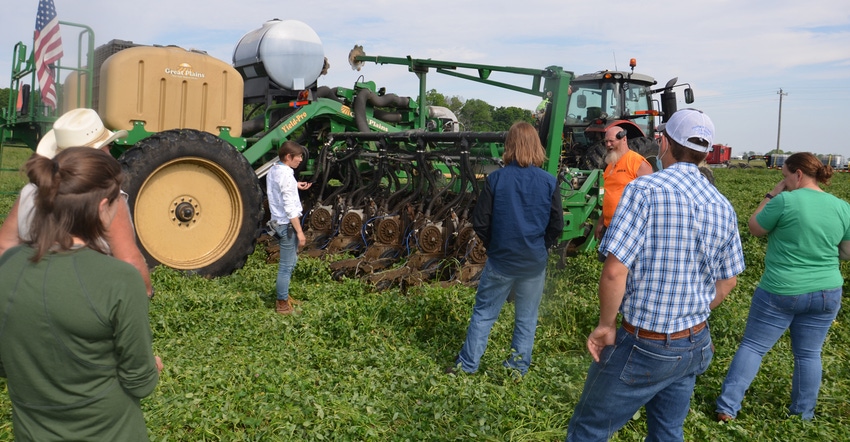February 9, 2022

When it comes to soil health, I focus on the same principles I was taught to be principles of good writing. The “who, what, where, when and why” of soil health help me understand where another person is coming from on their soil health journey. They can also help those on their soil health journey focus on key issues at key times.
Core soil health principles of “minimize disturbance, maximize soil cover, maximize biodiversity and maximize continuous living roots” are the “what” of soil health. If you want to improve the health and function of your soil, what do you need to do?
Related: What does soil health mean to you?
You need to minimize disturbance and maximize soil cover, biodiversity and continuous living roots! Let’s look at these principles in greater detail:
Minimize disturbance. Physical disturbance such as tillage can destroy soil aggregates, reduce water infiltration and increase erosion. Chemical disturbance such as overapplication of nutrients or pesticides can disrupt functions of soil biology. Biological disturbance such as overgrazing exposes soil and limits the ability of plants to harvest sunlight and ultimately sequester carbon.
Maximize soil cover. Armoring the soil with residues, mulches or living plants has many benefits. This “armor” can reduce wind or water erosion, better moderate soil temperatures and water evaporation, suppress weed growth, and shield the soil from raindrop impact.
Maximize biodiversity. There are no monocultures in nature. A community of diverse plants and their roots are a food source for soil biology. Different kinds of crops and cover crops help support biology in the soil. In a monoculture, only one type of plant puts carbon in the soil. This will limit soil biology and ultimately reduce soil function.
Maximize continuous living roots. When a plant photosynthesizes, carbon is converted from a gas to a solid — from carbon dioxide to glucose and other carbon-based compounds. These sugars feed the plant and are exuded out of plant roots into the soil to feed and communicate with microorganisms. Soil biology is responsible for building water-stable soil aggregates, scavenging and cycling nutrients, and sequestering soil carbon. A living root pumping carbon in the soil helps keep the workforce fed and ready to do their job.
Practicing soil health principles
Embracing soil health can be hard to wrap your head around. Determining what all these principles mean, let alone sorting through all opinions, sales pitches and recommendations, can be difficult.
Simplify it to two words: Protect and feed. Soil is a living, breathing ecosystem, and soil organisms drive the benefits obtained through achieving and improving the four soil health principles. Protecting habitat benefits the soil community from disturbance and exposure or lack of cover. Feeding benefits the soil community by providing diverse and continuous inputs of carbon sources.
Familiarize yourself with the soil health principles. Think about your current cropping system, and evaluate each practice you implement or tool you use. Determine if it is helping you minimize disturbance and maximize soil cover, biodiversity and continuous living roots.
Consider what you can do to adapt your management to better protect and feed your soil ecosystem. Use the Indiana NRCS Conservation Agronomy website.
McLain is Indiana’s state soil health specialist with the Natural Resources Conservation Service. She writes on behalf of the Indiana Conservation Partnership.
You May Also Like




